With advancements in technology, hearing aids continue to get smaller and smarter. Here are some of the latest ones to come out in 2017.
Owing to the social stigma associated with hearing loss, affected individuals often deny being afflicted. Most of them consider wearing hearing aids a sign of weakness. With the advent of Invisible-In-The-Canal (IIC) hearing aids and such other compact, easy to wear hearing instruments, ‘conspicuous’ hearing aids will soon be passé.
Let’s take a look at some of the advances in hearing aid technology that promise to bring a revolution in the field of treating hearing loss:
In a rush… You can skip to a quick Visual Summary at the end of this post… and can even download it!
Some Latest Hearing Aid Devices…

Hearing aid manufacturing companies like Oticon, Signia, Unitron and Phonak are coming up with new products that promise to make hearing aids more accessible and attractive to hearing loss patients. Here are some of their latest offerings:
1. Oticon OPN
Released in 2016, the Oticon OPN is the world’s first internet-connected hearing aid. The OPN can stream audio directly from your phone and connect with a variety of different devices using IoT (Internet of Things) technology. While the majority of hearing aids work well in one-to-one conversations or quiet environments, the OPN can reduce the ambient background noise and provide accurate directional amplification of sounds. The basis for this is a chip that performs such a high number of calculations per second that the accuracy of amplification is improved significantly.
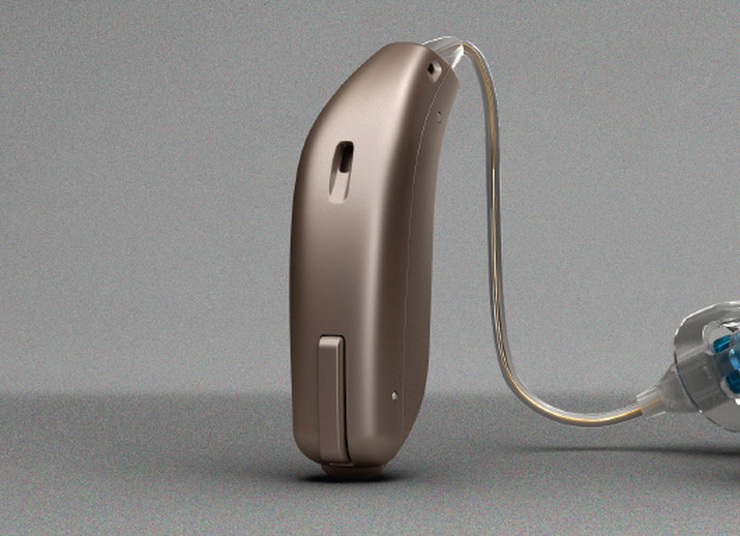
Oticon will soon release a rechargeable, super-powered OPN which promises to further expand the options of hearing-aid wearers.
2. Unitron Moxi Now Tempus
RIC or Receiver-In-The-Canal hearing aids, look very similar to BTEs, but with the receiver placed inside the ear canal. While RICs are already small, the Unitron Moxi Now is the world’s smallest hearing aid – just 20.2mm tall by 6.5mm wide! The Tempus platform addresses the challenging problem of improving conversations in noisy and crowded environments – the Soundcore feature automatically adjusts the hearing aid program based on the user’s listening environment.
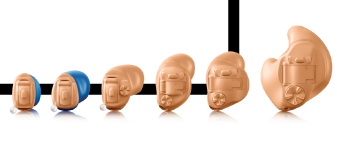
Unitron will also introduce an app called uControl 2.0, which can evaluate the user’s surroundings. The audiologist would then have the option of accessing this information remotely. Whenever an appointment with the audiologist is scheduled, he/she can prepare for it in advance, or can also advise the user over the phone. This won’t just save the user’s time, but also reduce the efforts, since the audiologist will be able to provide prompt solutions to the user.
3. Phonak Virto B Titanium
The Phonak Virto B Titanium is an In-The-Canal (ITC) hearing aid. By using a titanium shell, Phonak has managed to shrink the thickness of the casing by 50% – which means that the device is smaller and can fit deeper in the ear canal. The Phonak Virto B titanium is a great option for people with small ear canals who may not be candidates for other invisible devices.
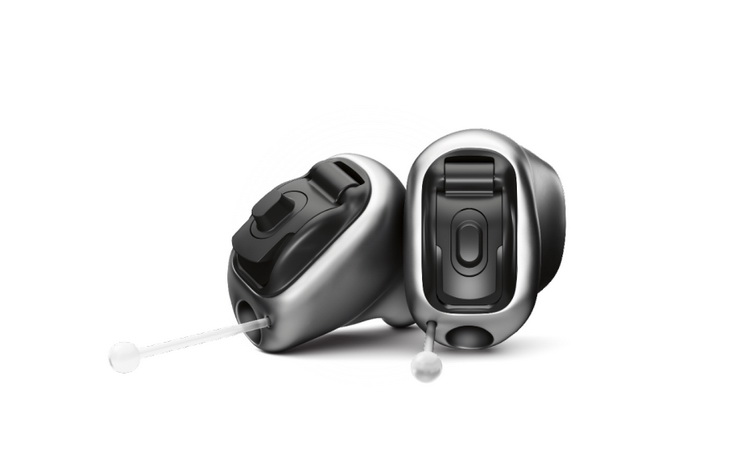
The Virto B uses Phonak’s latest AutoSense OS™ and is built on the Belong platform which gives excellent performance in a variety of different listening environments. This is recommended for people who suffer from mild to moderate hearing loss.
4. Signia Silk Primax
Signia Silk, launched in 2016, offers a comfortable CIC (Completely-In-The-Canal) hearing aid solution that doesn’t need the traditional custom fitting-process.
The traditional custom-fitting process involves having an ear impression taken (at the hearing provider’s office), so that a handmade (or 3D-printed) hearing aid shell can be fabricated (with the hearing aid electronics and componentry installed inside the shell). Impressions are sent off to the hearing aid manufacturer (physically or digitally). The patient and hearing provider must then wait for a certain number of days to weeks to schedule a follow-up appointment for the hearing aid fitting.
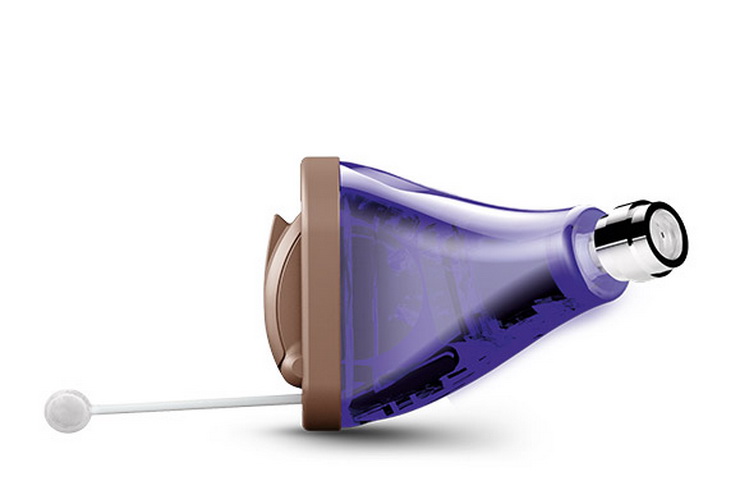
Silk, on the other hand, has soft-silicone ‘click-sleeves’ which mold to the contours of the customer’s ear canals. This allows the customer to take the hearing aids home to evaluate them immediately. Its binaural OneMic directionality boosts your ear’s natural focus on specific sounds from the front while filtering out annoying noises from behind. Its wireless connectivity enables the user to stream audio directly into his/her ears and enjoy the convenience of a wide range of accessories, such as remote controls.
5. Signia Nx Platform With OVP (Own Voice Processing)
Sivanos has unveiled its new Signia Nx Platform with OVP (Own Voice Processing). The own-voice issue has been a traditional problem in hearing aid fitting. All hearing aid users experience a change in the sound of their own voice. Many of them—especially first time wearers—are dissatisfied with its loud unnatural sound. This negative perception reduces initial acceptance, forcing hearing care professionals to compromise on audibility to improve the sound of the user’s own voice. With OVP technology, the hearing aid can now be trained to identify when the wearer is speaking, and adjust the gain and other parameters to accommodate the sound of his/her voice. When the user talks, the hearing aid adjusts to his/her own voice; when the user doesn’t talk, the hearing aid does what the hearing care professional would normally expect it to do.
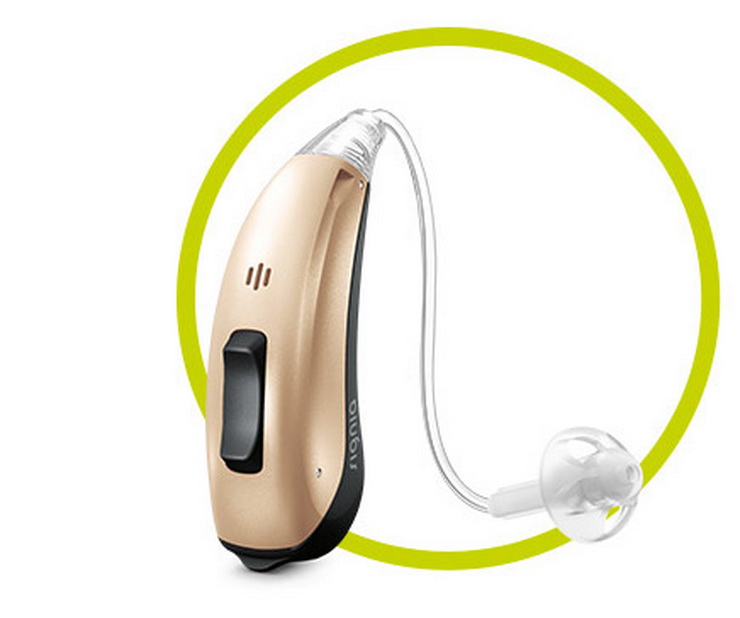
The Nx platform also includes a motion sensor function that can access information from an individual’s smartphone to determine if they’re stationary or in a more dynamic setting, such as talking while walking down a sidewalk.
6. ReSound ENZO 3D
ReSound ENZO 3D, launched by GN Hearing, uses 3rd generation binaural directionality which will help hearing aid users with severe to profound hearing loss to experience excellent sound quality and improved clarity in any environment.
ReSound ENZO 3D is reportedly the only hearing aid in the world with comprehensive remote fine-tuning capabilities for those with severe to profound hearing loss, according to GN Hearing. Enabled by ReSound Assist, this new feature allows users to stay in touch with their hearing care professional wherever they are, receiving on-the-go hearing care and new settings securely via the Cloud without having to schedule and travel for a clinic appointment. ReSound Assist is accessed via the recently launched app, ReSound Smart 3D™, which also allows users to easily personalize and control their sound at any time, on-the-go directly from a smartphone. Users can also stream phone calls and music from their smartphone to their ReSound ENZO 3D hearing aids.
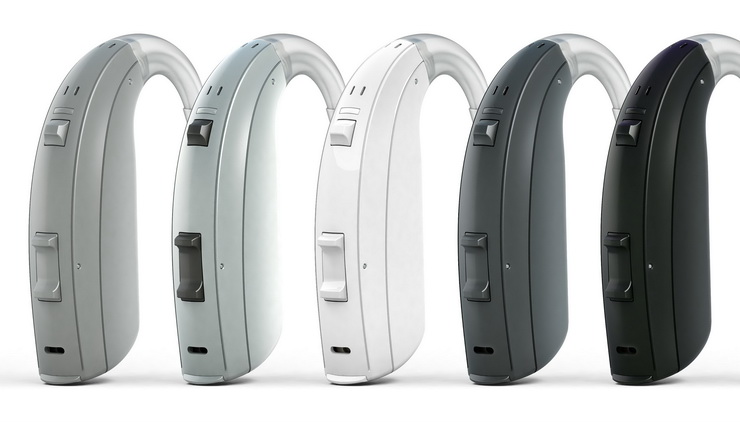
Hearing aid technology continues to progress, and the above list cannot be considered exhaustive. It will soon be possible for users of hearing aids to get instruments that don’t just allow them to hear well again, but also ones that are easy to use and extremely discreet.
If you, or a loved one, are suffering from hearing loss, get in touch with Centre For Hearing today! Centre For Hearing partners with well-known brands around the world, and offers the latest technology in hearing aids and other instruments.
Call us on on +91 9811227492 for a FREE CONSULTATION!
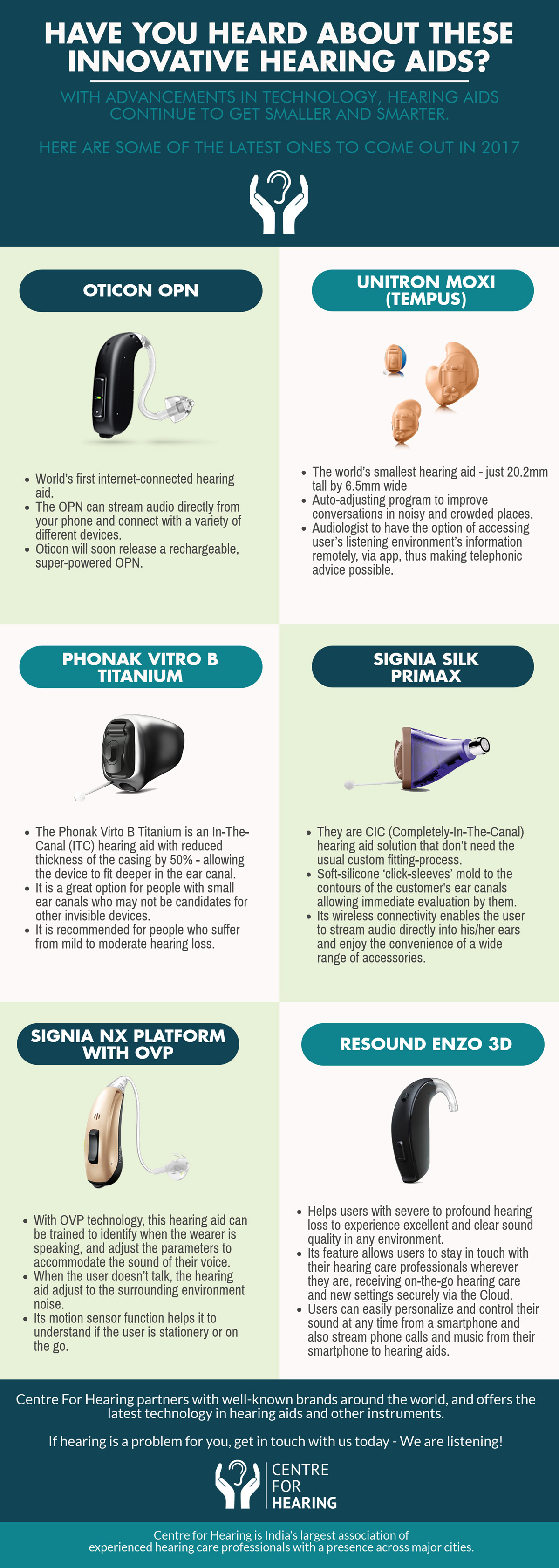
Locate a Hearing Aids Centre Near You:

